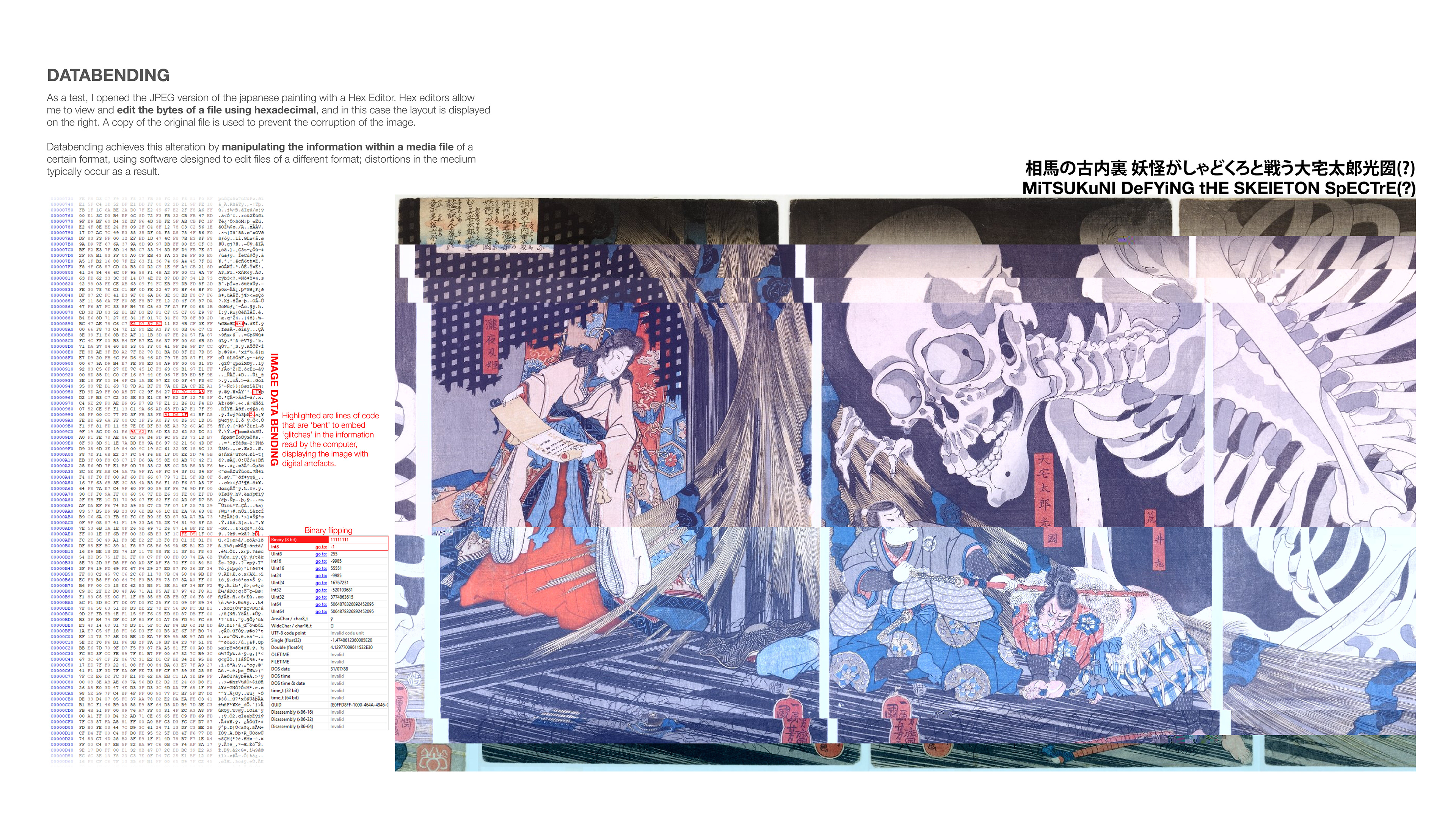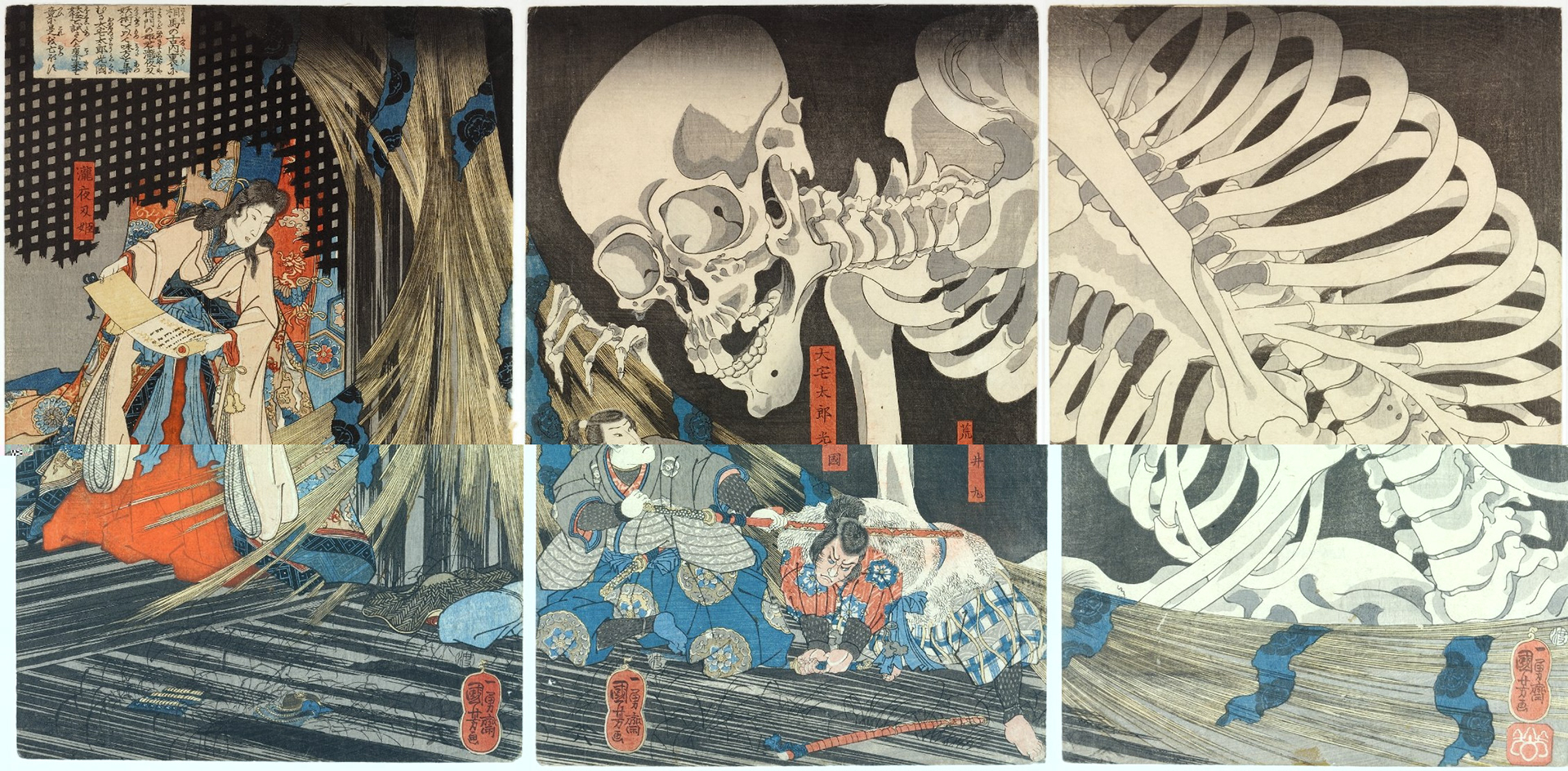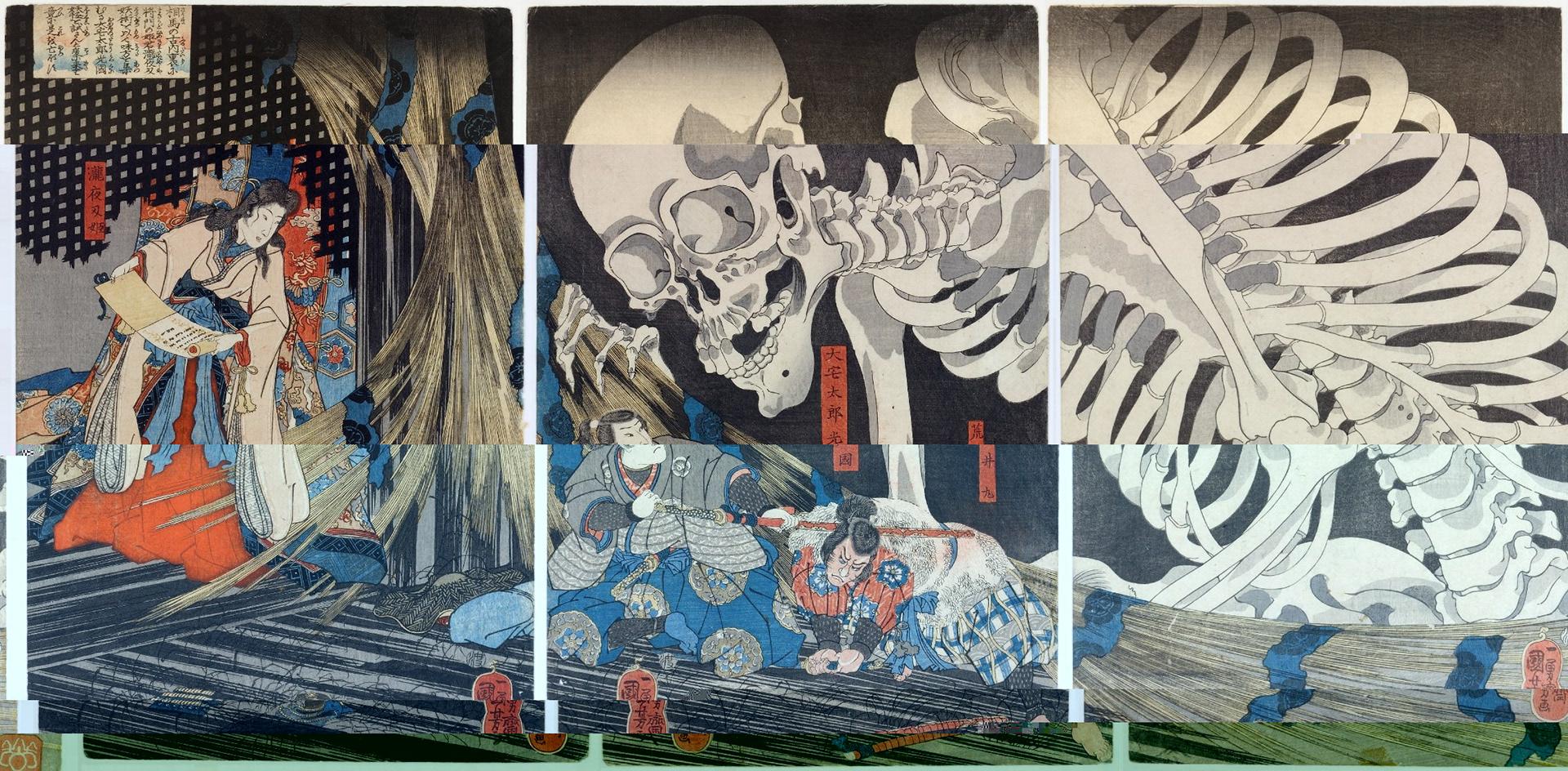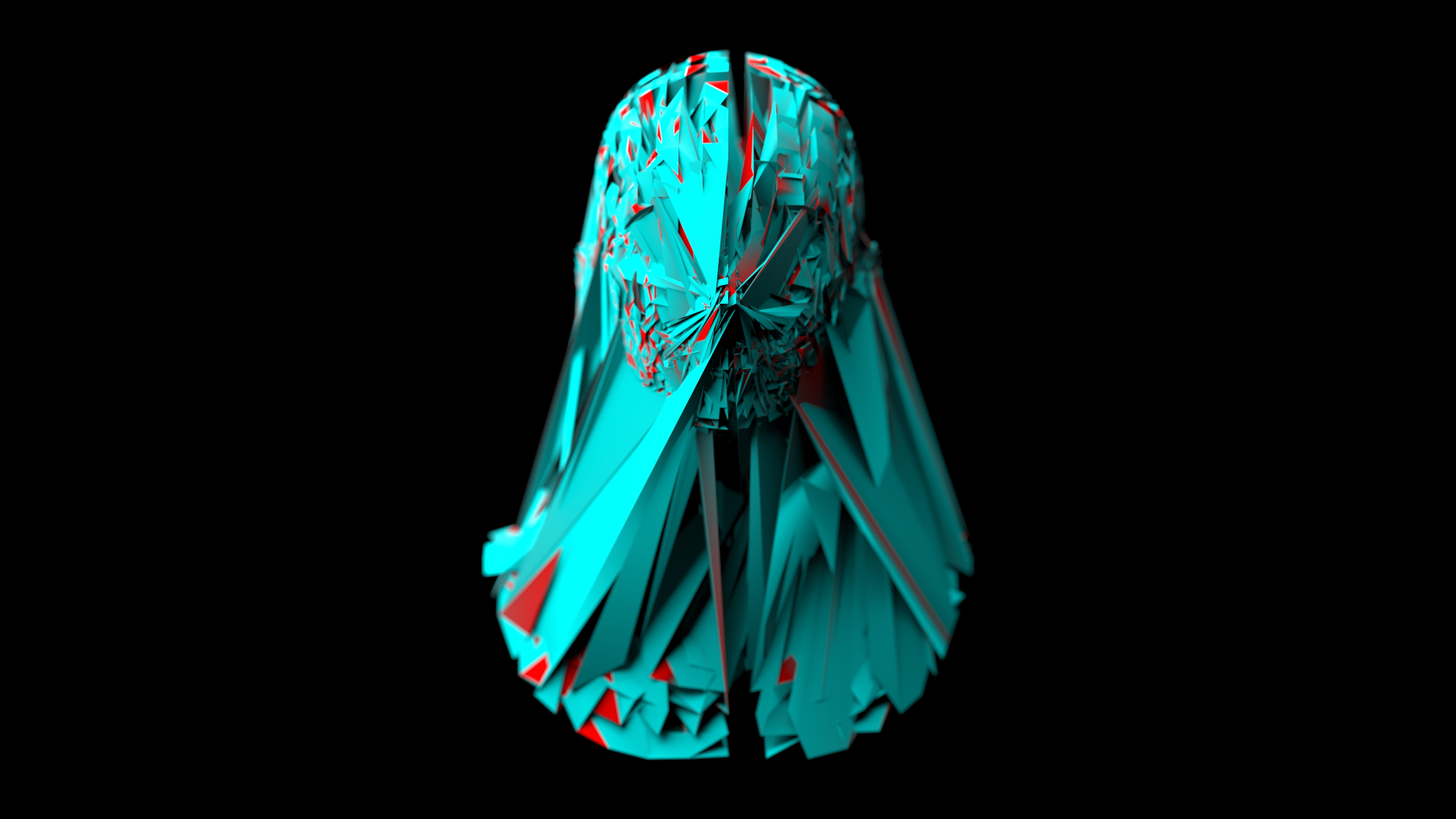Synopsis
While we find beauty in age within the physical world where it is seen as poetic and nostalgic, our reactions to digital decay are that of anxiety. Why? Just like how Japanese artisans mended pottery with gold to highlight their imperfections, it should be natural for us as architects to embrace the imperfections of our digital crafts. I was interested in how digital decay could be instrumental in generating architecture that exposes the beauty of digital imperfections, as a reminder of the transience of all things, both tangible and intangible.
This body of work approached 'glitch' as a philosophy rather than an aesthetic. It became a critical component of the design ethos of the architectural project Ginza Tera.
Role
Designer
Credits
2D Databending
By opening the 2D image with a Hex editor, I was able to view and edit the bytes of a file using hexadecimal. By manipulating the information within the medial file with software designed to edit files of a different format, near-authentic digital decay could be simulated. This is called databending.











3D Databending
Using the technique learnt from 2D databending, I attempted to apply the same to a 3D model. This time, instead of manipulating binary codes of pixels, I was altering vector values of vertices.







The Glitched Language
This experiment was then expanded into an architectural project Ginza Tera, located in Tokyo. Through understanding and simulating the glitch in an authentic way, a design ethos was developed that embraces the digital glitch, incorporating the design philosophy architecturally and in consideration of the larger context of Japan.






















